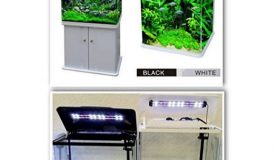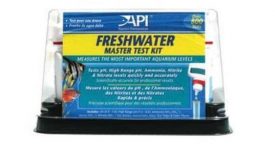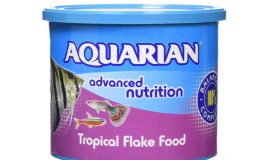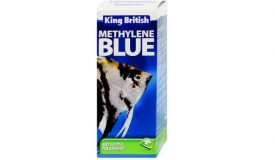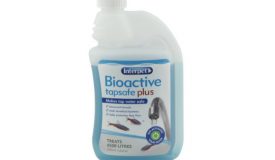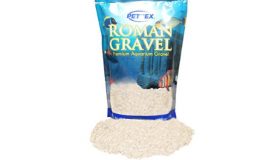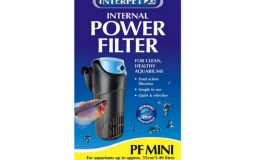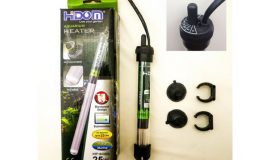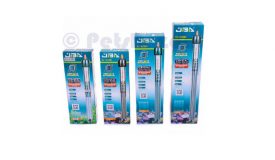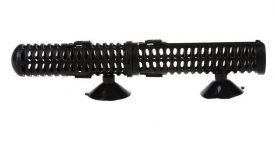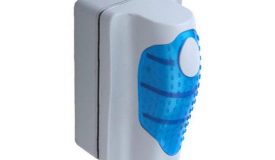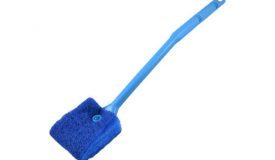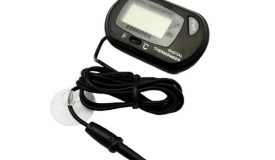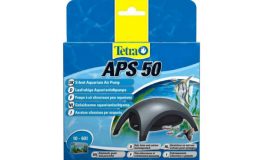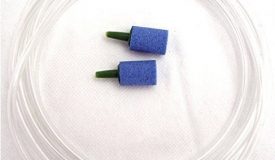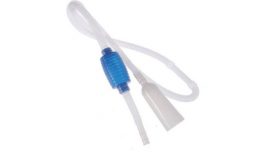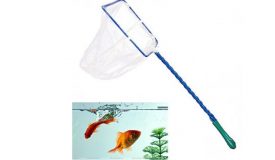Traditionally, goldfish have been seen as the iconic fish for children to keep, but despite their popularity because they can be kept easily in cold water they do not make ideal pets. Because of the size they can grow to, they need big tanks to remain healthy or they are likely to outgrow their tanks quickly or die from pollution related illnesses. They are also messy fish, tearing up live plants and generally produce a lot of waste. This pollutes the tank quickly, creating the need to clean them out more frequently, hence adding to the maintenance. Even the smallest, most suitable goldfish for aquariums, the fantail requires at least a 30 litre tank alone.
For simpler, cheaper fish-keeping consider temperate fish types.
These are smaller, meaning you can keep more of them compared to a goldfish. They are cleaner, hence require much less maintenance.
Traditionally many temperate fish were kept as tropical fish, but today, as we have centrally heated homes, we are able to keep these temperate fish at cooler room temperatures without the need for a tank heater.
Having said this, it is still a good idea to have a heater as a backup, just in case the temperature drops too low during those cold winter nights, although this can be turned off again during the day, when the house’s heating system is on warming the surroudings again.
Most of the cost of keeping fish occursat the outset. So once you have set up your tank, the running costs are relatively low.
Cleaning the tank can also range from a 20% weekly water change to a 80% monthly one, depending on the size of tank and amount of fish. This is to prevent the water becoming heavily fouled. Hence is very low maintenance as pets go.
What you will need to set up a temperate fish tank or aquarium:
If you are new to fish keeping, you will soon realise that these pets have quite a high set up cost, especially if you are setting up a new tank from scratch. Therefore, you should consider buying a second hand tank, which comes with all the equipment in a bundle. This can be bought for a fraction of the cost of a new set-up. If you decide to upgrade later, you can always buy new then, when you are more confident about what you need.
So to start with, you will need a good sized tank to ensure your fish have room to grow, swim and stay healthy. 10 gallons (40 litres) or 2ft (60cm) long is the recommended minimum, so that you can keep a few different varieties of fish to add interest to your tank.
You will also need:
- a good filter to keep the water clean,
- a light so that you can watch the fish
- an air pump and air stone, to aerate your tank
- plant substrate, gravel or sand to mimic a sea bed
- a heater to keep your fish warm if it gets too cold
- a thermometer to check the temperature of your tank
- a net to move your fish easily
- a siphon cleaner to aid water changes and hoover the bottom of your tank of debris
- a bucket to collect dirty water in
- tubing for air stones
- live plants to give your fish shade to hide in and sleep under
- plant food – to feed your live plants
- rocks/ log (optional) for decoration
- Water dechlorinator / water conditioner to remove harmful toxins from tap water
- Fish Medication
- Fish food to feed your fish
Some the items you will require for your new pet can be found to the right of this page.
This is not a cheap tank to set up, but your maintenance costs will be kept lower by the fact that there will be no vet bills.
Suitable Temperate Fish Types
The list below are of cheap, hardy fish which need little attention and can be easily kept at around 20c. They are more forgiving of beginners and more likely to last even if you make a few mistakes. They can also be replaced quite easily should they die, as they are inexpensive to buy. You also don’t need to worry about vet bills.
The list is of small shoaling fish, which means they need to be kept in groups of at least 5 or more.
Hardy temperate fish types for beginners should therefore be chosen from:
The Danio Family – Zebra danios, Leopard danios, glo fish danios, Fire Bar danios, Golden danios, Snow White danios and so on.
The mountain minnow family – White Cloud, Golden, Rosy
Small catfish corydoras such as Panda corydoras, albino corydoras, peppered corydoras
Variatus platy (not to be mistaken for tropical platies which look similar but would not survive the lower temperatures.
Barbs – Cherry Barbs, Odessa Barbs, Gold Barbs – but these are a little aggressive and may nip at long finned fish, they also require larger tanks as they are larger fish than the minnows.
Buenos Aires Tetra – but these are a little aggressive and may nip at long finned fish.
As tank mates also consider adding cherry shrimp for their colour or amano shrimp and snails which eat algae and help to keep your tank clean.
However, do make sure the shrimp you get are amano and not ghost shrimp which are easily mistaken and actually hunt and kill fish.
There are other fish and crustacean you could investigate, but the above are readily available and easy to care for.
They can also live for up to 5 years if taken care of well.
Remember not to overstock your tank with fish, as the more fish you have, the more waste they will produce. This means the more toxic the water will become, requiring more regular water changes, hence adding to your maintenance.
Fish bought from pet stores are often not adult fish so need room to grow, so if you over stock, you may need to buy another tank to house the adult fish. Instead add more plants to the tank to fill it up and create interest, also produce oxygen for your fish.
Live planted tanks, also reduce algae, as well as provide places for your fish to hide and feel secure. Some fish also need soft real plants to sleep in.
For the more information about the best aquatic plants for beginners read:
Live aquarium plants for beginners
For more information about how to set up an aquarium read:
How to set up and run a healthy aquarium
For information on preventing and treating fish illnesses read:
Fish illnesses and treatments for beginners
Some essentials you may require for your new pet
Click on the items to find out more.

